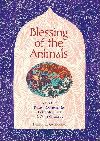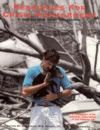What an Elephant Can Teach Businesses Owners

Cookie, the Asian elephant was confused, although she was a veteran of training methodology, she was unfocused. This meant that when one of her trainers appeared, instead of paying attention, assessing and implementing–she ran through her entire repertoire. The problem with an unfocused, reactive Asian elephant is that they can get frustrated–and frustration leads to aggression.
Sadly, without the right focus and ability to respond as her trainers requested, she would remain out of the limelight. Instead of enjoying the stimulation gleaned from doing educational performances with her buddies, she would remain alone, sequestered away until the show ended and her elephant pals rejoined her.
For a captive elephant, mental challenges, stimulation through variety of activities and environment, as well as social activities with other species, or a small herd all are important for optimal living. So the lack of clarity and focus really compromised her situation.
When working animals or in business, it is important to delve into the past to get to the present. As a consultant and trainer who working with both wild animals and businesses, my life has been spent watching and assessing before planning and implementing.
To be successful in wild animal training, it is important to understand the history of the species, the individual, and nuances of the situation as well as the environment and possible risks–and be able to anticipate change or challenges. Believe it or not, it is the same with business–which I will get to after I finish chatting about the elephant.
Before I tackled Cookie’s performance problem, I busied myself with activities that helped strengthen my relationship with the elephants. As they got to know me, I got to watch them and became familiar with the nuances of their personality traits* and particular preferences. I also took the time to observe their training sessions with my colleagues.
Cookie the elephant always worked to excel, her positioning was always perfectly executed and she put her full force and focus into her actions. The problem was, she wasn’t clear on what was being asked, so she simply ran through the exercises until she either completed her entire repertoire or heard the whistle, the signal that told her she had correctly completed the task.
It became clear to me that she did not understand what was required and therefore worked on a variety of tasks, moving one to the other quickly, until she was finished or the coveted whistle blew.
Believe it or not, most of the trainers had not identified the problem and so continued moving forward. This meant that results were inconsistent and unreliable. This is a dangerous situation when working with animals that weight thousands of pounds more than you do!
The fix was easy, teach the elephant how to narrow her focus and tackle only one thing at at time–the requested action. But first, she had to understand that it was okay to NOT be doing anything. She needed to just be still.
How long did the re-education take? One training session of about 30 minutes. However, the assessment and clarity took longer since I had to watch a few sessions with other trainers to determine the issue and to implement the right adjustment. Moving forward, it took making sure the team of trainers were consistent in their habits and practices.

Ultimately, training wild animals to be successful is a solid foundation to teaching business owners or entrepreneurs to be successful. Both involve assessments and planning.
It is important to assess the nuances and differences exist between a brick and mortar (business with a store front), a traveling service provider (no store front or public office) or other entity. Then considerations vary between an off-line (real world) and the on-line presence (virtual world)–sometimes it is a blend of the two.
Today change is happening at record rates and competition has moved into a global economy or that of a hyper-local focus. This means it is important to really know where you have been to map out where you are going.
This bring me to my point, how are you starting this year?
Begin with an assessment. Not a guess, but a review.
Mine was just completed and so I wanted to share a bit of it with you. Over the year my intention is to take you on an armchair safari through this year’s progress–for better or worse.
Facts Not Assumption
My assumptions on how the year was playing out and how they actually ended were totally different–and I measured with results and outcomes rather than vague impressions.
Now for some reason there was a chasm between my thinking and what actually played out. I actually did better than I had anticipated. In fact, when I crunched the year end number on December 31st I did not have the increase I had reported in September as the final numbers were not in. Happily the increase in revenue sat at 62% for the year–plus another 5% from miscellaneous income sources outside the main business.
My head was telling me it wasn’t a great year but ultimately, I am attracting better clients, working smarter, enjoying better health, and have the time to enjoy myself in my new location.
Shifting Perspective
Perhaps the biggest shift this year was in the way I thought about things. When you are around other smart thinkers, it is bound to happen. I was constantly amazed at the different perspectives and answers shared by other business owners who were working through the same lessons and challenges posed by business coach Todd Herman and also implementing the business training provided by Melanie Duncan.
Work Smarter
Now I’ve always heard about working smart, and although I thought I was, I came to the realization that I really had not been taught the right tactics. Instead, I was working hard and so was stuck on the hamster wheel of activity without a way to make forward progress. The reality was things were going to stay as they were unless something changed.
That realization also highlighted why I saw cyclical ups and downs in the business. Working to grow, then focusing on client service and delivery, instead of developing systems. meant that all the wheels were not churning and was the reason behind lulls and stagnation. Prioritizing via strategic planning as well as fast testing and implementation were missing from my tactics.
To work smarter the better option would be to test an assumption and only move forward if proven it would work OR change and adapt based on what I found and test again. It became clear that establishing systems for delivery and fulfillment were necessary. Since business has always been referral based, I also discovered a broken marketing funnel needed for consistent growth. Finally, I realized that many of the products and services were not what I wanted to deliver in the long term.
What I learned: Niche down, assess and develop systems that consistently allow growth, delivery and help the business to scale.
Fail Fast
In the previous year I had an idea that I was going to launch but when another agency came up with an almost identical product, I partnered with them instead. The upside to the online business training model was that everything was in place and it was a three-way win between those involved. I sold the concept to the organization and the other agency provided everything needed–we would split the revenue three ways so the organization benefited financially as well.
Sounds great right? The problem was it wasn’t a proven model. The first test worked well in one region of the USA but not in ours. Also, instead of discovering this quickly, I spent about a year promoting and paying licensing fees for something destined to fail.
What I learned: Test and get out fast or tweak and test again to move forward or scrap the project.
Habit Change
My skill set as an entrepreneur and business person is vast, when I got online in 1995 and then lost my web designer and graphics person, not too many people were providing such services, so I took up the reins and tackled things myself. However, although I can do almost anything I put my mind to doing, it really isn’t a good investment of my time. My genius zone has to do with the bigger picture strategies and early identification of impending changes or trends and helping businesses get better customer reviews for more revenue and growth.
Truth be told, there were a couple of disasters that happened that resurfaced again. First, a few years ago I told the web designer that I needed a mobile friendly site–but in the end discovered it was mobile responsive (adjusts to the device instead of being more easily used by someone with a mobile phone. What I needed was a site with big buttons and click to call options. So, last year I again needed to redo it.
However, I decided to contract someone to redo another site, sadly the communication was not good and her “custom” theme (which in my past experience means php coding and edits to create what you want) was really only an edited template. To get what I wanted I ended up having to do a bunch of work anyway. A bad experience, the contractor could have leveraged a good experience into a job working on 12 or more sites but lost that opportunity and I found myself cleaning up again. Eesh!
Finally, success outsourcing work to other agencies was mixed. One mess up meant that I had to get in to fix it (which took four times the work), while another delivered 96% when I shoot for 100%–fortunately the CEO was paying attention and they are working hard to fix the it as I write. Still, I saw another hiccup and it means my search for options will continue.
What I learned: Find a way to systematize what I need in a clear format, verify and validate prior to contracting. Use solid referrals from other business owners I know and trust online.
Constraints
Over time my business has changed, getting online in 1995 was a big part of that. As a consultant I have been a paid speaker, a traditionally published author, and have helped both consumers and businesses when it came to topics of marketing, public relations, and tactical aspects of business. However, I also well known for my work with captive wildlife and related topics.
Over the past few years I’ve delivered business services that have included marketing, search engine optimization (known more commonly as SEO) and specialty writing. Seeing trends early means that I ventured into business reputation (customer reviews for business) a few years ago when I saw that the star ratings were driving consumers to a business or to the business competitors.
What I learned: Significant changes hit the Internet in 2015 and so I narrowed my focus and will specialize instead of being a larger agency providing multiple services.
Relocation
When it comes to moving, I must have a record since I found myself in seven different living situations last year! The good news is that I finally nestled into my dream town a few blocks from the ocean. In my youth my days were spent in, on or around the water so I am glad to be near the sea again. It suits me and is like a sigh to my soul.
The back story on the relocation is that where I was living was a toxic situation due to a bio-hazard under the house. The last two years has been spent primarily in health recovery and in maintaining the clients I had but not on growth.
Although there were amazing adventures, moves are a big challenge. Last year a large wildfire threatened the house I had rented just prior to my relocation to the central coast. However, I am happy to say that I am settling in so I can focus and get on with life without interruption.
What I learned: Create a recurring income stream to avoid experiencing fluctuations.
Balance
To say I was driven over my life would be an understatement, however I faced some physical and energetic limitations due to the bio-hazard exposure. Out of the four quarters of 2015, only two were spent really working on growing business. I spent one full quarter on full-time health related tasks and then another on final relocation and integration.
Today I focus more on balance, the last time I had it was circa 1984! When your career is your passion, hobby, and a way of life–it can easily get out of balance despite the adventurous living.
What I learned: Live in balance and be flexible–change and challenges are inevitable.
As you move into the New Year, I’d be interested in knowing what you plan and how you are going accomplish those projects and tasks to make a difference so please let me know! Click over to continue this conversation at TheArkLady Facebook page.
*Similar to human social styles or personality types, my findings were published in the following locations along with my comments on captive elephant management: International Zoo News Volume 44/4 No 227, The Journal of the Elephant Manager’s Association Volume VI Number 2 & 3, Journal of the American Association of Zoo Keepers Volume 23 Number 9.
Thank you for reading this post. You can now Leave A Comment (0) or Leave A Trackback.
Post Info
This entry was posted on Monday, January 4th, 2016 and is filed under ARKlady News.
You can follow any responses to this entry through the Comments Feed.
Both comments and pings are currently closed.
Previous Post: 90 Day Year™ Review »
Next Post: What Hauling Elephant Can Teach Business Owners »



